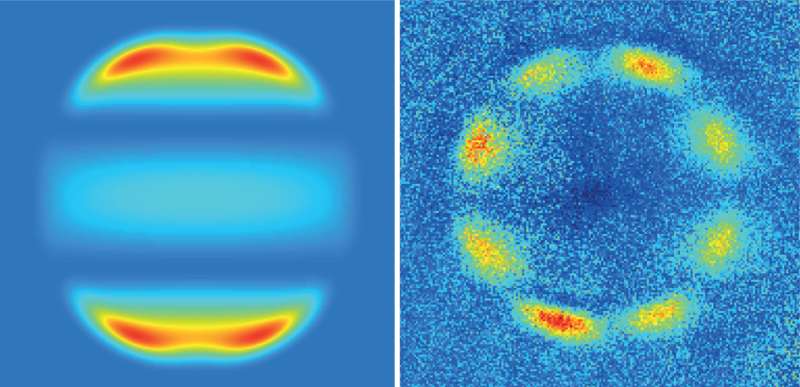July 7, 2016 report
Study suggests a flaw in traditional theory that describes photodissociation process

(Phys.org)—A combined team of researchers from Columbia University in the U.S. and the University of Warsaw in Poland has found that there appear to be flaws in traditional theory that describe how photodissociation works. In their paper published in the journal Nature, the team describes how they took a different approach to studying what happens when light causes molecules to break apart and what they observed by doing so. David Chandler with Sandia National Laboratories offers a historical perspective and an analysis of the work done by the team in a News & Views piece in the same journal issue.
Scientists have known for some time that light is able to cause molecules to break apart—oxygen molecules are broken apart in the atmosphere by sunlight, for example, but understanding how exactly the process works has been an ongoing project. Up till now, researchers have studied the process by irradiating a very cold supersonic molecular beam. This technique has suffered from the problem of not being able to create a beam that was low enough in temperature to allow for molecular pieces to be manipulated in a truly quantum state; instead they have had to rely on averaging results. In this new effort, the team developed a technique that allowed for tracking the disassociation at much slower speeds, which allowed them to get a better look at what actually occurs.
To get a slower look, the researchers used an optical lattice to hold a group of strontium-88 atoms in a group, which were brought together by photo absorption, resulting in excited molecules. The team allowed the molecules to decay to their lowest quantum state, then excited them to specific states which allowed for studying them as they were exposed and broken apart by pulses of laser light. Doing so allowed the team to view a purely magnetic transition for the first time, and also to see that not all of the pieces of the shattered molecule flew perpendicular or parallel to the direction of the light source, which Chandler notes "can only be described by a full quantum-mechanical treatment of the light-absorption process."
The team next plans to conduct similar experiments using molecules brought to higher energy states to learn more about the ways in which the molecules behave in ways that seem more classical than quantum.
More information: M. McDonald et al. Photodissociation of ultracold diatomic strontium molecules with quantum state control, Nature (2016). DOI: 10.1038/nature18314
Abstract
Chemical reactions at ultracold temperatures are expected to be dominated by quantum mechanical effects. Although progress towards ultracold chemistry has been made through atomic photoassociation, Feshbach resonances and bimolecular collisions, these approaches have been limited by imperfect quantum state selectivity. In particular, attaining complete control of the ground or excited continuum quantum states has remained a challenge. Here we achieve this control using photodissociation, an approach that encodes a wealth of information in the angular distribution of outgoing fragments. By photodissociating ultracold 88Sr2 molecules with full control of the low-energy continuum, we access the quantum regime of ultracold chemistry, observing resonant and nonresonant barrier tunnelling, matter–wave interference of reaction products and forbidden reaction pathways. Our results illustrate the failure of the traditional quasiclassical model of photodissociation and instead are accurately described by a quantum mechanical model. The experimental ability to produce well-defined quantum continuum states at low energies will enable high-precision studies of long-range molecular potentials for which accurate quantum chemistry models are unavailable, and may serve as a source of entangled states and coherent matter waves for a wide range of experiments in quantum optics.
Journal information: Nature
© 2016 Phys.org





















